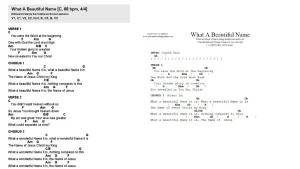all things bright and beautiful question answer, Get detailed All Things Bright and Beautiful question answer guide with stanza-wise meaning. Few poems in English literature carry the simplicity, faith, and universal appeal of “All Things Bright and Beautiful.” Penned by Cecil Frances Alexander, this timeless hymn remains relevant to students across generations. Its child-like tone and spiritual undertone make it a favorite in schools, particularly in literature and moral instruction classes.
You’re in the right place if you’re looking for a complete All Things Bright and Beautiful question-answer guide. In this article, we will go beyond memorizing lines. We’ll explore themes, values, imagery, and literary tools and present detailed answers to help you shine in exams.
all things bright and beautiful question answer
“All Things Bright and Beautiful” is a Christian hymn written in the 19th century. The poet Cecil Frances Alexander wrote it to teach children that everything in the world, big or small, is created by God and, therefore, worthy of admiration and gratitude.
This poem encourages us to notice the everyday wonders of nature: the brightness of the sun, the softness of a flower, the buzzing of bees, the flowing river, and the majesty of the mountain. The simple words teach profound truths:ure is divine.
The repetitive chorus ties all the stanzas together and reinforces the central theme:
All things bright and beautiful,
All creatures, great and small,
All things wise and wonderful,
The Lord God made them all.
Objectives of Studying All Things Bright and Beautiful
Before we move into the All Things Bright and Beautiful question-answer table and discussion, here’s why this poem is often included in the curriculum:
- To teach students moral values like gratitude, respect for life, and simplicity
- To help them appreciate nature as a divine creation
- To build vocabulary related to the natural world
- To introduce literary techniques in a gentle, understandable way
- To develop poetic appreciation and memory through rhyme and repetition
Q2: Why is “All Things Bright and Beautiful” an ideal poem for children?
A:
This poem is simple in structure, language, and tone, making it ideal for children. The use of vivid natural imagery helps spark curiosity. The message promotes values like gratitude and appreciation for the world around them. Moreover, its musical rhythm makes it easy to memorize and recite. Its moral teaching is subtle yet strong, helping children develop spiritual and environmental sensitivity.
Q2: Why is “All Things Bright and Beautiful” an ideal poem for children?
A:
This poem is simple in structure, language, and tone, making it ideal for children. The use of vivid natural imagery helps spark curiosity. The message promotes values like gratitude and appreciation for the world around them. Moreover, its musical rhythm makes it easy to memorize and recite. Its moral teaching is subtle yet strong, helping children develop spiritual and environmental sensitivity.
All Things Bright and Beautiful Question Answer Table
Here’s a complete reference table with short questions and answers from the poem:
| Question | Answer |
|---|---|
| Who is the poet of “All Things Bright and Beautiful”? | Cecil Frances Alexander. |
| What is the main message of the poem? | Every part of nature is beautiful and made by God. |
| What kind of poem is it? | A Christian hymn. |
| What literary device is used in “All creatures great and small”? | Contrast (between great and small) and Repetition. |
| Name three things from nature described in the poem. | Purple-headed mountain, river running by, and cold wind in winter. |
| What does the poet say about the seasons? | God made every season both summer and winter with its unique beauty. |
| Why does the poet repeat the refrain? | To remind readers that God created everything, and nothing is too small to be appreciated. |
| What values do we learn from the poem? | Gratefulness, observation, faith in divine creation, love for nature. |
| What is the rhyme scheme of the poem? | AABB in each stanza. |
| Why is the poem called universal and timeless? | Because the theme of beauty in nature and divine creation applies to all people across ages, cultures, and beliefs. |
Stanza-Wise Explanation (With Vocabulary)
To give deeper All Things Bright and Beautiful question answer insights, let’s break the poem down stanza by stanza:
Stanza 1
“All things bright and beautiful,
All creatures great and small…”
This opening stanza sets the tone. The poet uses simple opposites (bright-dark, great-small, wise-simple) to show that everything has beauty and meaning.
Vocabulary:
- Creatures = living beings
- Wise = intelligent
- Wonderful = full of wonder
Stanza 2
“Each little flower that opens,
Each little bird that sings…”
The poet draws our attention to the most minor details of nature. Even a flower or a bird has a divine purpose.
Literary device: Repetition of “Each Little” emphasizes equality in creation.
Long Answer Examples
Q1: What is the significance of the refrain in the poem?
A:
The refrain “All things bright and beautiful…” is repeated after each stanza to emphasize the poem’s central idea that every part of the world, no matter how small or insignificant it may seem, is a creation of God. This repetition helps readers remember the message and creates a musical, hymn-like effect. It’s a poetic device that enhances rhythm and reinforces the theme.
Q2: Why is “All Things Bright and Beautiful” an ideal poem for children?
A:
This poem is simple in structure, language, and tone, making it ideal for children. The use of vivid natural imagery helps spark curiosity. The message promotes values like gratitude and appreciation for the world around them. Moreover, its musical rhythm makes it easy to memorize and recite. Its moral teaching is subtle yet strong, helping children develop spiritual and environmental sensitivity.
What Makes This Poem Spiritually Rich?
Though All Things Bright and Beautiful is a nature poem, its soul lies in its spiritual depth. It teaches that:
- Nature isn’t random, it’s intentional
- Beauty isn’t only in big things; small things matter
- God’s presence can be felt in sunlight, wind, and even snow
- Gratitude brings peace
These ideas are gently planted in the reader’s heart, especially children.
How to Score High with All Things Bright and Beautiful Question Answer in Exams
Here are five smart tips for writing top-scoring answers:
- Mention the poet’s name in every long answer
- Quote key lines from the poem to support your points
- Include literary devices if possible
- Relate the theme to real-life values (e.g., kindness, nature-love)
- Keep your tone respectful, thoughtful, and structured
Frequently Asked Questions (FAQs)
Q: Is this poem only for religious students?
No. The values are universal love, nature, simplicity which connect with all students regardless of religion.
Q: How many stanzas are there?
Usually six, but school versions may use fewer.
Q: Is it based on Bible verses?
Yes, indirectly. The theme is inspired by verses celebrating creation, like Genesis.
Q: Can I use this poem in environmental essays?
Yes. It beautifully describes nature’s diversity and value.
Final Ref
The poem “All Things Bright and Beautiful” is not just a classroom lesson. It’s a gentle reminder to open our eyes to the miracles around us in the rustling leaves, a drop of dew, a bird in the sky, or the feel of the wind on the face. It teaches humility, gratitude, and joy qualities the modern world desperately needs.
If you were searching for a rich, meaningful All Things Bright and Beautiful question-answer guide, we hope this helps you for exams and life.
Take the words with you. Live a little slower. Look a little closer.




